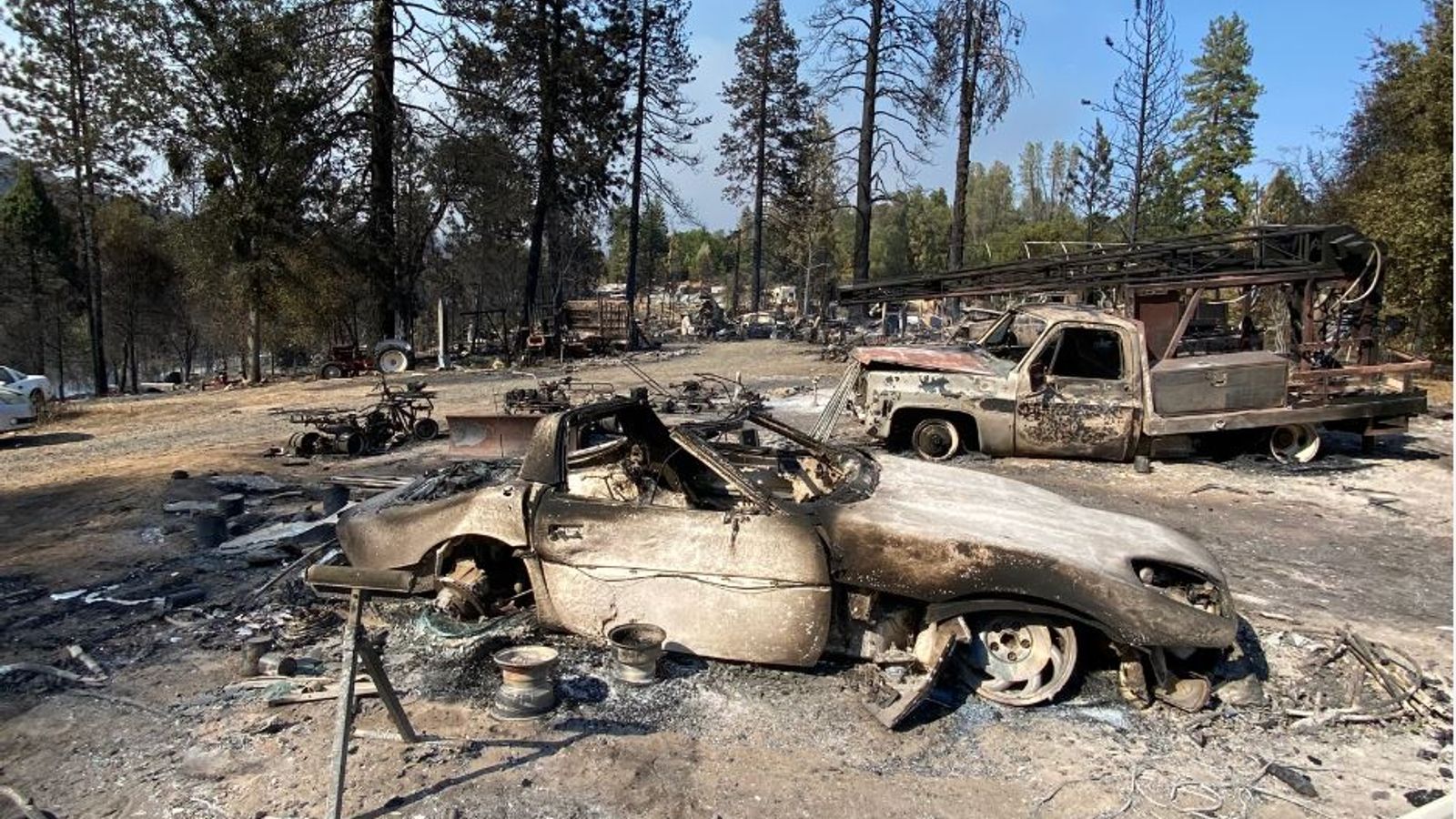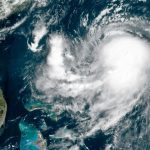Long before you see the devastation, you can smell it: the ash blowing through the air, the trees still smoking and smouldering.
More than 6,000 residents have been evacuated out of the danger zone, while 3,000 firefighters have been deployed.
They are battling to contain the Oak Fire, yet so far only 16% of it is under control.
Then you approach stark scenes like the one we came across a few miles from the town of Mariposa.
The fire recently ripped through here leaving a charred car park of sports cars, pick-up trucks, quad bikes and tractors.
These burnt-out metal skeletons were all that remained, with trickles of once-molten metal providing evidence of the intensity of the heat.
This level of destruction is, however, not unusual. In California, wildfires and states of emergency are an annual occurrence.
Every year, though, the blazes are intensifying.
Seventeen thousand acres of land have been destroyed so far – an area more than half the size of Paris.
Outside an evacuation centre we met Ruth Clark, 94, who packed up and left her home within 10 minutes and has been living in her car for four days.
“It was getting mad with planes overhead roaring around like a warzone”, she explained. “So I said to my partner: let’s get the two cats and get the heck out of here.
“I had no time to be sorry or be fearful. All I knew is I had to move fast.”
Darryl Coleman struggled to get out quite as swiftly because he refused to leave his 21 dogs behind.
We met in the searing summer heat next to his truck, piled high with animal crates.
I asked how he was feeling. “Overwhelmed,” he replied. “It was a lot of stress converting my vehicle to carry all my dogs.”
A long drought, parched vegetation and the changing climate have proved a potent combination.
And this is only the beginning: the wildfire season could wreak havoc here for months.






















